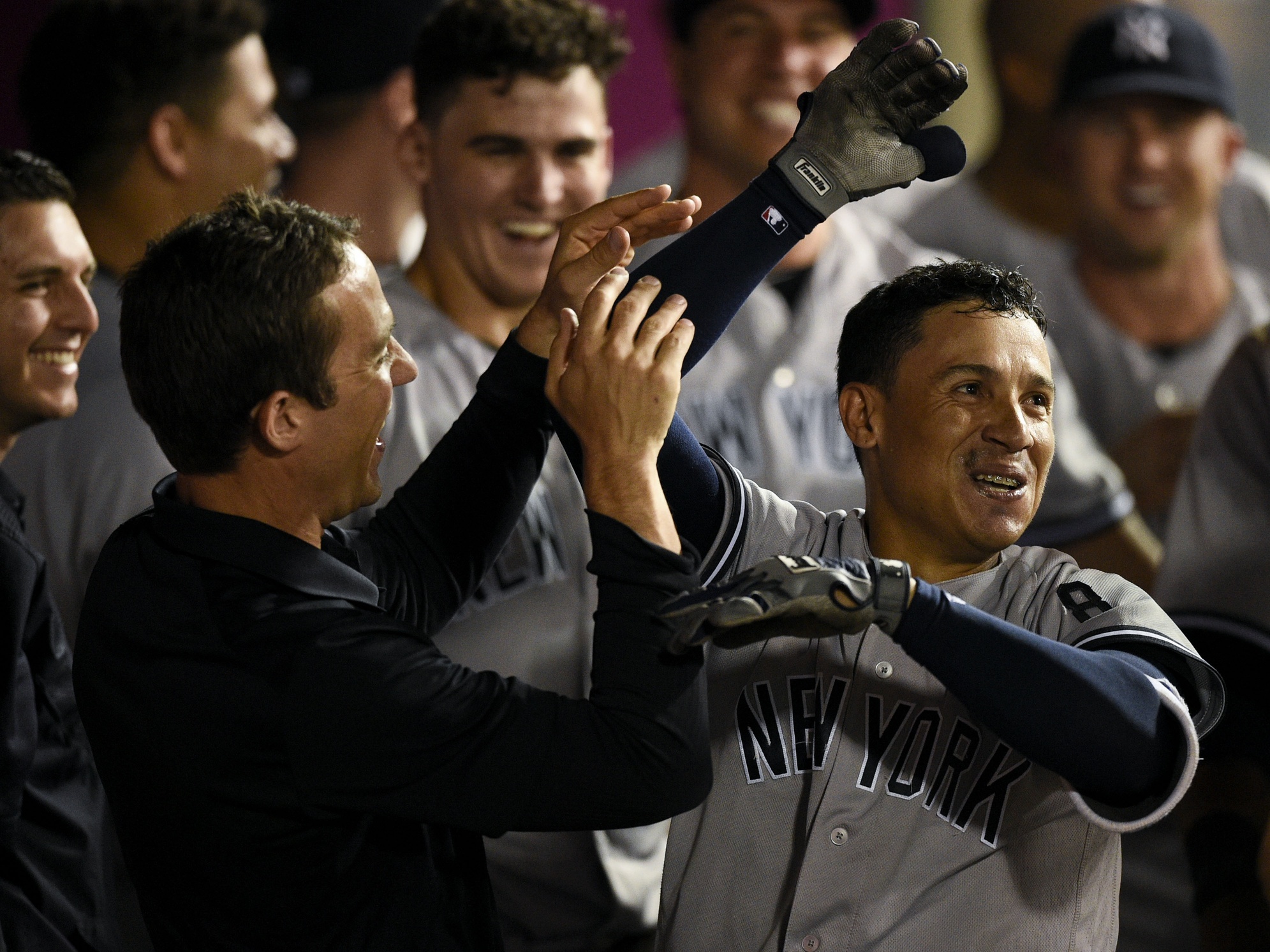I know it’s hard to hear me over the deafening clamor of fans professing their love for Gary Sanchez, but there is more than just Sanchez to be optimistic about on the New York Gary Sanchez’s…I mean, Yankees.
One such bright spot is lightly-regarded rookie infielder Ronald Torreyes. Torreyes has had a very interesting career arc so far, as the Yankees represent his sixth organization in his last six seasons. He’s stalled in Triple-A since 2014, and been exposed to waivers several times. If you knew nothing about a player except for these facts, you’d probably assume that he was probably approaching or on the wrong side of 30. But would you believe that Torreyes is just 23 years of age?
In 109 plate appearances with the Yankees this season, Torreyes has slashed a solid .287/.339/.436 while rotating between second base, shortstop, third base, and even right field. If you took that type of production plus versatility and guaranteed its sustainability, you’re probably looking at a Martin Prado/Ben Zobrist-type of player that’s easily worth a ten-figure annual salary.
Of course, nothing is guaranteed in baseball, especially with 23 year-old rookies that have 117 career plate appearances to their name. But the next question is to figure out what exactly should be expected of Torreyes going forward. Let’s start with the bad news — that already-modest .149 ISO is likely to come down. If you’ve seen his build and his swing, you’ve probably realized that he’s not much of a power threat — like, at all. His career-high in home runs in any professional season is six, a mark he set back in A-ball in 2012. That .149 ISO will probably move closer to his career minor-league mark of .111 as his frequency of doubles and triples comes down. The other downside in his statistical profile is that he doesn’t draw many walks, receiving a free pass 6.4 percent of the time with the Yankees and 5.8 percent for his minor league career. Therefore, he will have to rely on a high batting average to post respectable on-base percentages in the future, and we figure that his power output will always be capped as well.
However, relying on a high batting average shouldn’t be too much of a problem for Torreyes, as his exceptional hand-eye coordination has led to rather ridiculous strikeout rates in the minors. His career minor league K rate is 6.2 percent. His career minor league K rate is 6.2 percent. His career minor league K rate is 6.2 percent. Did you catch that? Just in case you missed it, I repeated it, but this time in italics. And in case you missed that, I then repeated the exact same sentence in bold and italics. For reference, there are only three qualified hitters in baseball this season with a K rate below 10 percent, while the leader (Jose Iglesias, surprisingly) stands at 8.9 percent.
Torreyes’ absurdly high rate of contact in the minors led to a .299 career average on a very sustainable .314 BABIP, and he’s carried many of those skills with him in the majors. His strikeout rate has almost doubled to 11.0 percent, but that mark would still rank him in the top 10 in the MLB if he had enough PA to qualify. His current .287 average and .339 OBP has propelled him to above league-average production.
Of course, there are downsides. With a player that doesn’t walk much or hit for power, there will be stretches where the BABIP-gods aren’t looking out for him, and those stretches will be very, very cold. With contact being his only decidedly above-average skill, he’s a slip in strikeout rate away from being a replaceable utility infielder.
On the defensive side, it’s probably too early to say what he is, based off of such a small sample size. There aren’t nearly enough innings to incorporate the defensive metrics, but from previous minor league scouting reports and the eye test, I feel comfortable in saying that he’s a decent defender at second base and third while being able to be passable at short. He’s only played four innings so far in right field, but if he can expand his versatility to the corner outfield spots, then suddenly you’ve got the makings of a six-position league-average bat on your hands. And don’t forget Bill James’ words — league-average is very good.
It’s still far too early to anoint Torreyes as a building block for the future, but if he can maintain at least league-average offensive production while playing multiple positions across the diamond, then he suddenly becomes very, very valuable, especially considering that he comes with five more years of team control after this season. The future keeps getting brighter.
Photo: Kelvin Kuo / USA Today Sports

Rob Refsnyder offers the same type of game with more pop in his bat and speed on the bases. I like them both but it’sgoing to be tough to find a spot for both.